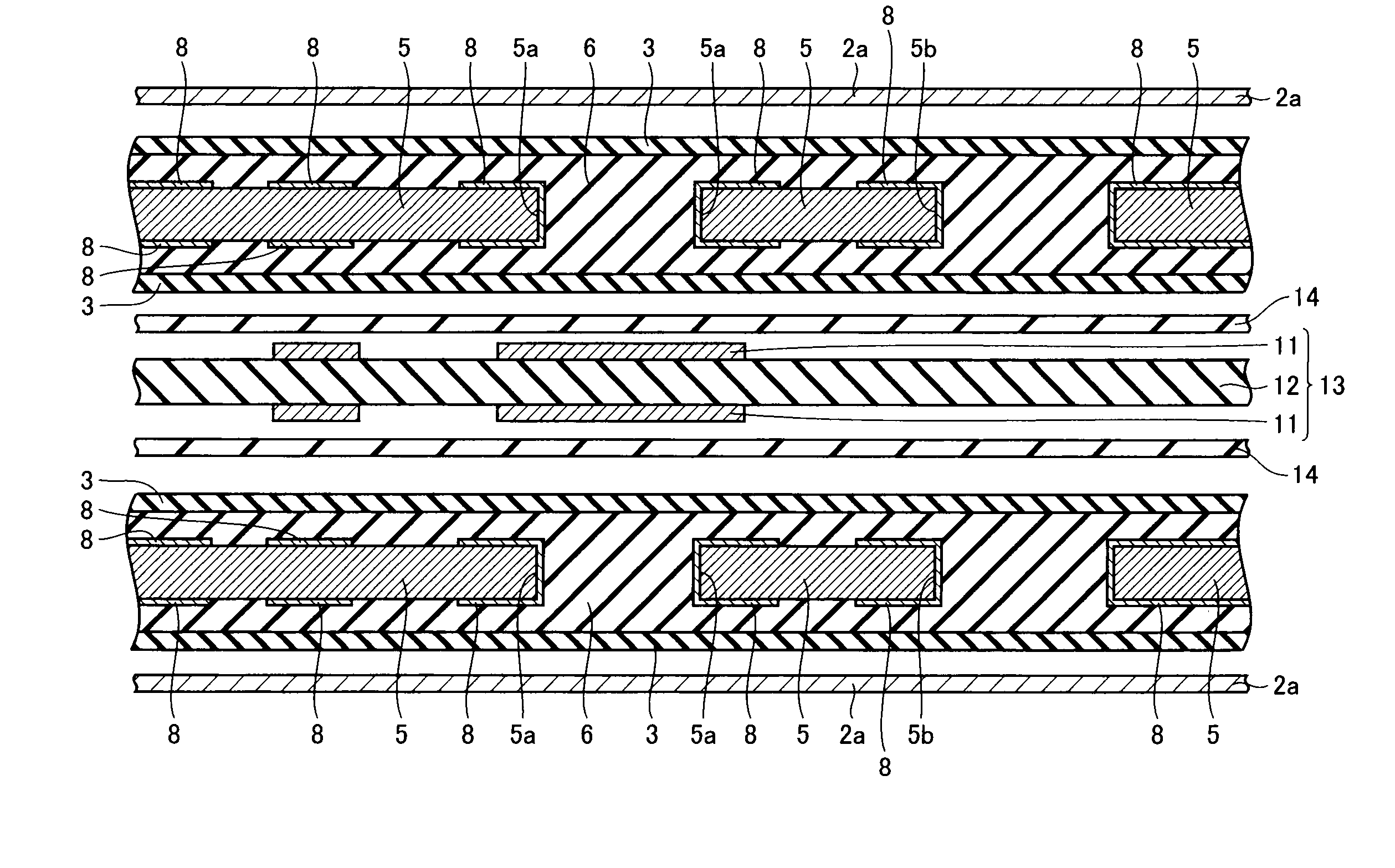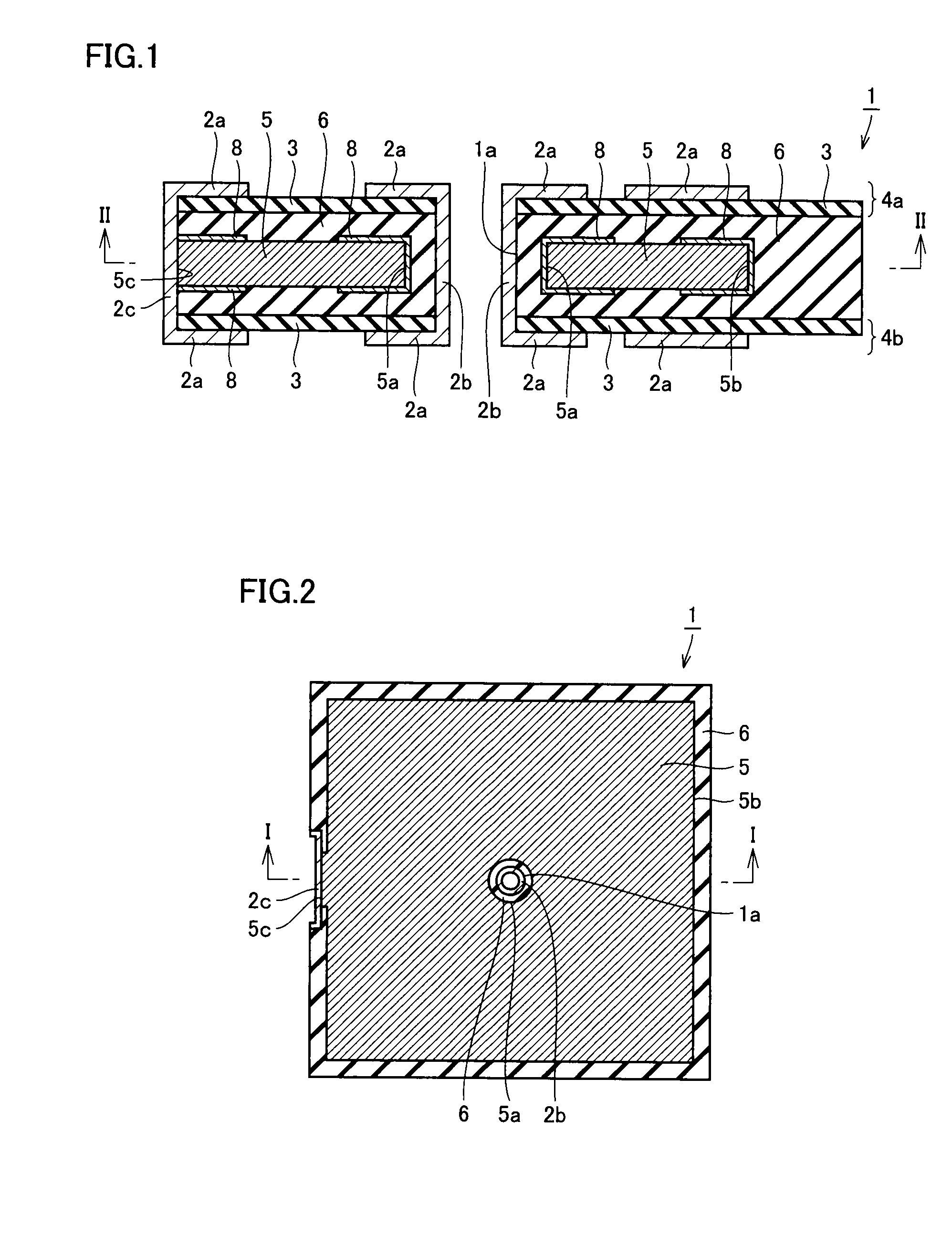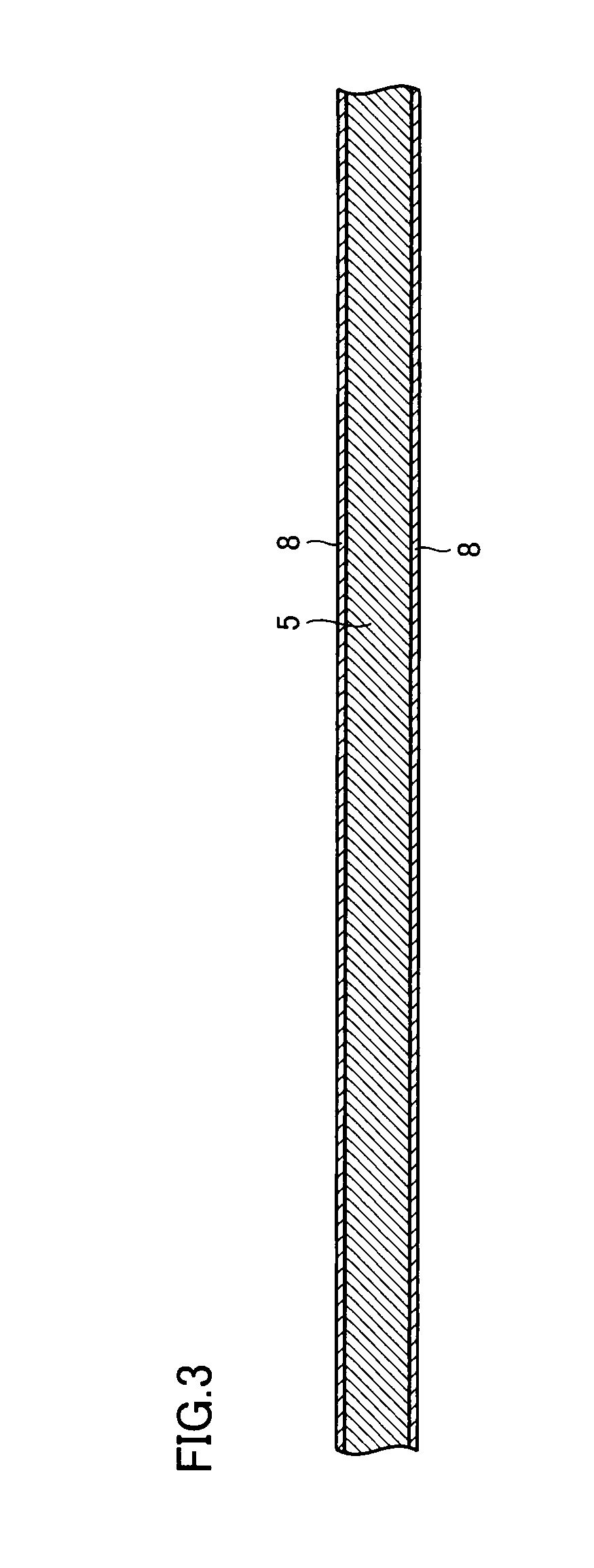Printed interconnection board and method of manufacturing the same
a technology of interconnection board and printed board, which is applied in the direction of printed circuit, printed circuit manufacturing, printed circuit aspects, etc., can solve the problems of failure to achieve mounting reliability, electrically conductive carbon powder may fall off, and exfoliation occurs, so as to prevent the exfoliation of a cfrp layer, the effect of high thermal conductivity and low thermal expansivity
- Summary
- Abstract
- Description
- Claims
- Application Information
AI Technical Summary
Benefits of technology
Problems solved by technology
Method used
Image
Examples
first embodiment
[0030]A cross sectional portion taken along a line I-I of FIG. 2 corresponds to a cross section of FIG. 1. Further, in FIG. 2, an electrically conductive layer 8 is not illustrated for the sake of convenience of description.
[0031]Referring to FIG. 1, a printed interconnection board 1 mainly has a pair of upper and lower signal circuit layers 4a and 4b, a core including a CFRP layer 5 (hereinafter referred to as a CFRP core), an adhesive member 6, a first electrically conductive layer 2b, and coating layers 2c and 6.
[0032]Each of the pair of upper and lower signal circuit layers 4a and 4b has an insulating base material 3, and a signal interconnection 2a formed on a surface of insulating base material 3. Insulating base material 3 is, for example, a material prepared by curing a prepreg produced by impregnating glass cloth with epoxy resin or the like, and preferably has low thermal expansivity comparable to that of CFRP layer 5 to reduce stress caused by a difference in coefficients...
second embodiment
[0073]In the first embodiment, the description has been given of a case where a laminated board 10 shown in FIG. 8 is formed, and thereafter copper foil 2a is placed and laminated above and below the laminated board as shown in FIG. 9. In contrast, in the present embodiment, a four-layered printed interconnection board is manufactured using laminated board 10 shown in FIG. 8. Hereinafter, a description thereof will be given. Referring to FIG. 21, two laminated boards 10 shown in FIG. 8 are prepared. An internal layer signal circuit layer 13 is arranged between these two laminated boards 10 with glass epoxy prepregs 14 interposed between internal layer signal circuit layer 13 and laminated boards 10, and electrically conductive layers 2a made of, for example, copper foil are arranged on the two laminated boards 10 on sides opposite to internal layer signal circuit layer 13. With this arrangement, heat and pressure are applied using, for example, vacuum pressing. Thereafter, manufactu...
first example
[0081]Firstly, a CFRP core (thickness: 0.35 mm, size: 340 mm×250 mm) having prepreg 5 (CFRP layer 5) including carbon fiber (a cross material) with a thermal conductivity of 500 W / m·K, and 18 μm-thick copper foil 8 laminated on prepreg 5 was prepared (see FIG. 3).
[0082]Next, holes were drilled in the CFRP core to provide primary through hole 5a with a diameter of 1.5 mm and primary through hole 5b as an elongated hole with a width of 4 mm (see FIG. 4). On this occasion, carbon powders were dispersed from the wall surfaces of primary through holes 5a and 5b. Subsequently, copper plating was performed (see FIG. 5). Thereby, copper plating 8 was formed on the both wall surfaces of primary through holes 5a and 5b, preventing dispersion of carbon powders from the wall surfaces.
[0083]Next, an unnecessary portion of copper 8 was removed by patterning (see FIG. 6). Thereby, copper was removed from the surface of CFRP layer 5, and the surface of CFRP layer 5 was exposed. However, on the surf...
PUM
| Property | Measurement | Unit |
|---|---|---|
| thermal conductivity | aaaaa | aaaaa |
| temperature | aaaaa | aaaaa |
| thermal conductivity | aaaaa | aaaaa |
Abstract
Description
Claims
Application Information
 Login to View More
Login to View More - R&D
- Intellectual Property
- Life Sciences
- Materials
- Tech Scout
- Unparalleled Data Quality
- Higher Quality Content
- 60% Fewer Hallucinations
Browse by: Latest US Patents, China's latest patents, Technical Efficacy Thesaurus, Application Domain, Technology Topic, Popular Technical Reports.
© 2025 PatSnap. All rights reserved.Legal|Privacy policy|Modern Slavery Act Transparency Statement|Sitemap|About US| Contact US: help@patsnap.com



